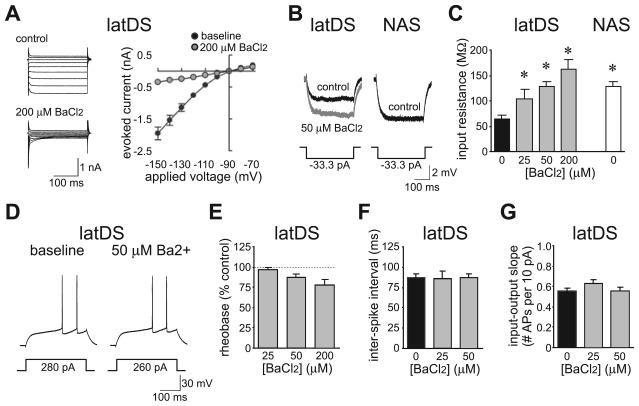Fig. 8.
Greater inwardly rectifying potassium channel (IRK) function in lateral dorsal striatum (latDS) neurons did not account for greater small-conductance calcium-dependent potassium channel (SK) regulation of firing. (A) Voltage-clamp experiments showing that the majority of current activated by hyperpolarization was sensitive to 200 μm BaCl2, and therefore was carried by IRKs. Neurons were held at −90 mV, and depolarized or hyperpolarized with 250-ms pulses ranging from −70 to −150 mV in 10-mV steps. (B–G) The input resistance was significantly greater in latDS than in nucleus accumbens shell (NAS) neurons (B and C), and BaCl2 dose-dependently enhanced the input resistance of latDS neurons (C), with a trend for a reduction in the current required for firing (rheobase) (D and E). However, increasing the input resistance of latDS neurons to the levels seen in NAS neurons (with 50 μm BaCl2) did not alter the interspike interval (D and F) or input–output slope (G) in latDS neurons, indicating that the greater SK function in latDS neurons was not secondary to greater IRK function. *Significantly different from control latDS, P < 0.05.

